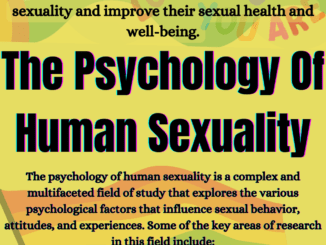
Definition Of Sexual Orientation
Sexual orientation refers to a person’s emotional, romantic, and sexual attraction toward others. It is an integral topic for human sexuality and sexual desire, as it is a fundamental aspect of one’s sexual identity and influences their sexual experiences and behaviors.
Sexual Orientation
Sexual orientation is a complex phenomenon and can be classified into various categories, including heterosexual, homosexual, bisexual, and asexual. Heterosexual individuals are attracted to people of the opposite sex, while homosexual individuals are attracted to people of the same sex. Bisexual individuals are attracted to people of both sexes, while asexual individuals have little or no sexual attraction toward anyone.
Understanding sexual orientation is crucial for understanding human sexuality and sexual desire. Sexual orientation is not a choice but is determined by a combination of biological, psychological, and social factors. Research suggests that sexual orientation is influenced by a person’s genetics, prenatal hormone exposure, and childhood experiences.
Sexual orientation can also impact a person’s mental and emotional well-being. Individuals who identify as LGBTQ+ often face social stigma, discrimination, and prejudice, which can lead to stress, anxiety, and depression. Therefore, it is essential to provide support and resources to individuals who are struggling with their sexual preferences.
Furthermore, sexual orientation can influence sexual behaviors and experiences. Understanding one’s sexual preference can help individuals make informed decisions about their sexual health and safety. For example, individuals who identify as homosexual may have different sexual health needs than individuals who identify as heterosexual.
Sexual orientation is also an essential topic in the field of human sexuality and sexual desire because it challenges traditional notions of gender and sexuality. Historically, society has viewed heterosexuality as the norm, and any other sexual orientation was stigmatized and pathologized. However, with increasing awareness and acceptance of LGBTQ+ individuals, there is a growing understanding that sexual preference is diverse and complex.
Types Of Sexualities
There are many different sexual orientations that people can identify with. Here are some of the most commonly recognized sexualities:
- Heterosexual: People who are attracted to individuals of the opposite sex.
- Homosexual: People who are attracted to individuals of the same sex.
- Bisexual: People who are attracted to both males and females.
- Pansexual: People who are attracted to individuals of all genders and gender identities.
- Asexual: People who experience little or no sexual attraction to anyone.
- Demisexual: People who experience sexual attraction only after developing a deep emotional connection with someone.
- Graysexual: People who experience a limited or infrequent sexual attraction to others.
- Queer: An umbrella term that can include any sexual preference outside of heterosexuality, but also incorporates gender identity and other aspects of identity.
- Androgynosexual: People who are attracted to individuals who present androgynous characteristics, regardless of gender.
- Skoliosexual: People who are attracted to individuals who identify outside of traditional gender categories, such as non-binary or genderqueer individuals.
Conclusion
It’s important to note that sexuality is a spectrum and not everyone falls into neat categories. Additionally, the language around sexual preference is constantly evolving, and individuals may use different labels to describe their own experiences.
Sexual orientation is an integral topic for human sexuality and sexual desire. It is a fundamental aspect of one’s sexual identity and influences their sexual experiences and behaviors. Understanding sexual preferencecan help individuals make informed decisions about their sexual health and safety and promote acceptance and support for LGBTQ+ individuals. As society continues to evolve, it is essential to embrace diversity and inclusivity in all aspects of human sexuality.




Be the first to comment